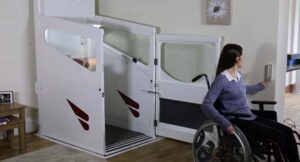
Physical disabilities affect many people on a temporary or permanent basis. Whilst some physical disabilities have available tests, most are often diagnosed through observations of a person’s development, behaviour and physical capabilities.
There are many types of physical disabilities that can affect an individual’s physical capacity or mobility; they can include inherited or genetic disorders, serious illness and injury.
Physical Disabilities That Affect The Use Of Stairs
Acquired Brain Injury
Brain injuries are caused through damage that occurs to the brain after birth. There are many factors that can cause brain damage including a blow to the head, stroke, alcohol or drugs, infection, disease or a lack of oxygen.
Those with brain damage are often slower at processing information, planning and solving problems. They can also experience changes to their behaviour and personality, physical and sensory abilities as well as their thinking and learning.
Spinal Cord Injury (SCI)
A major injury to a spinal cord often results in permanent physical disability. If injury, or too much pressure is applied to the spinal cord, or blood and oxygen supply is cut to the cord, then injury can occur.
For some people with SCI the result is paraplegia (loss of function below the chest), whilst for others it can lead to quadriplegia (loss of function below the neck).
Spinal cord injuries are mainly caused through accidents such as car crashes or falls, but some are caused by other means such as cancer, arthritis, infections, blood clots and degenerative spinal conditions.
Spina Bifida
This disability is the incomplete formation of the spine and spinal cord in utero. It can cause the spinal cord and nerves to be exposed on the surface of the back rather than inside the bone surrounded by muscle.
Those who suffer from spina bifida experience a range of mild to severe physical disabilities including paralysis or weakness of the legs, bowel and bladder incontinence, hydrocephalus (fluid in the brain cavities), deformities of the spine and learning difficulties.
These are just a small selection of disabilities which drastically affect the way people move around. Without platform lifts and other disabled access solutions, sufferers of these disabilities would not be able to gain access to a huge number of buildings and locations.